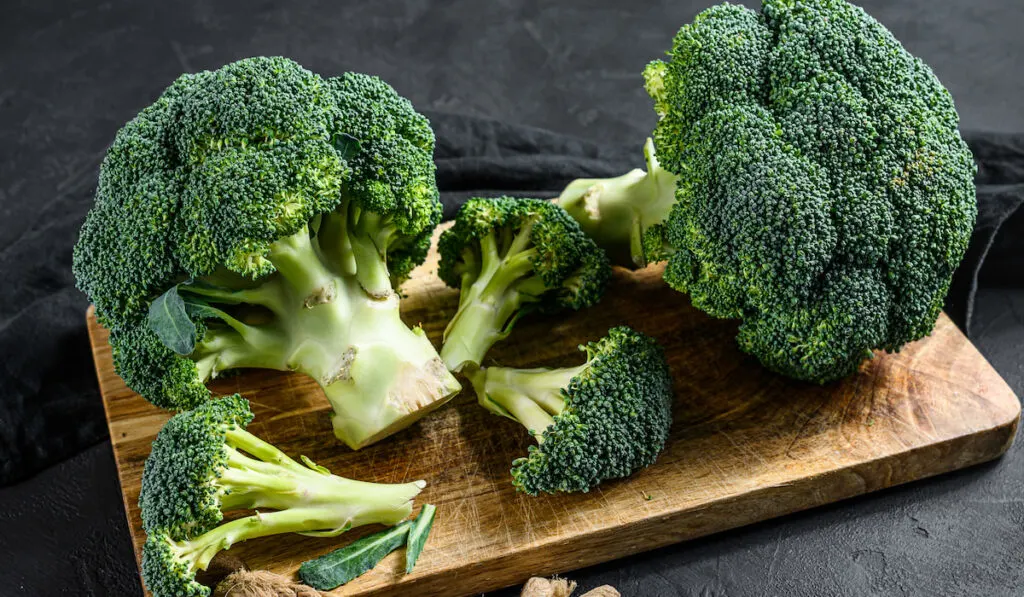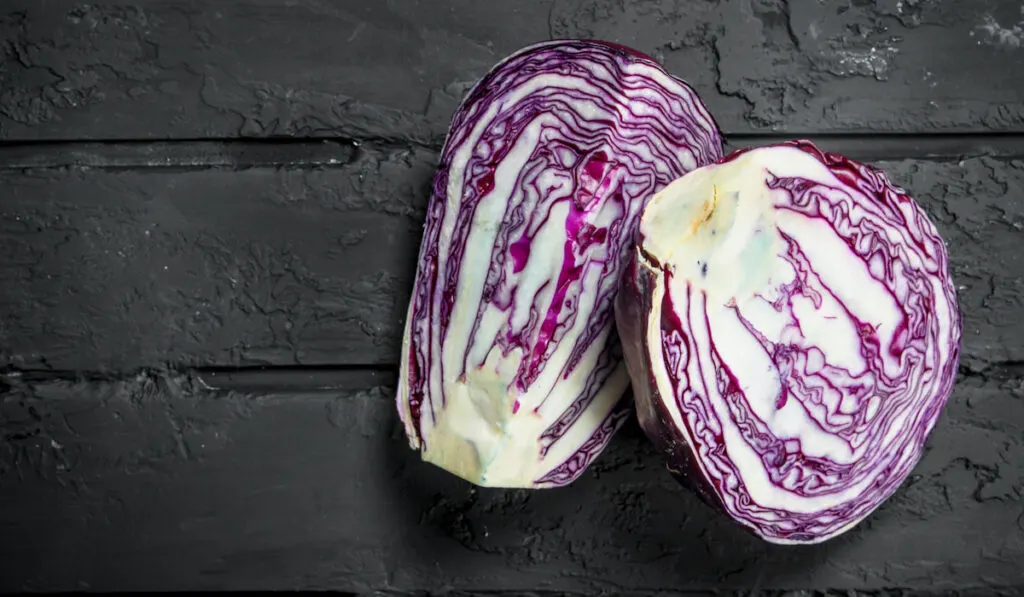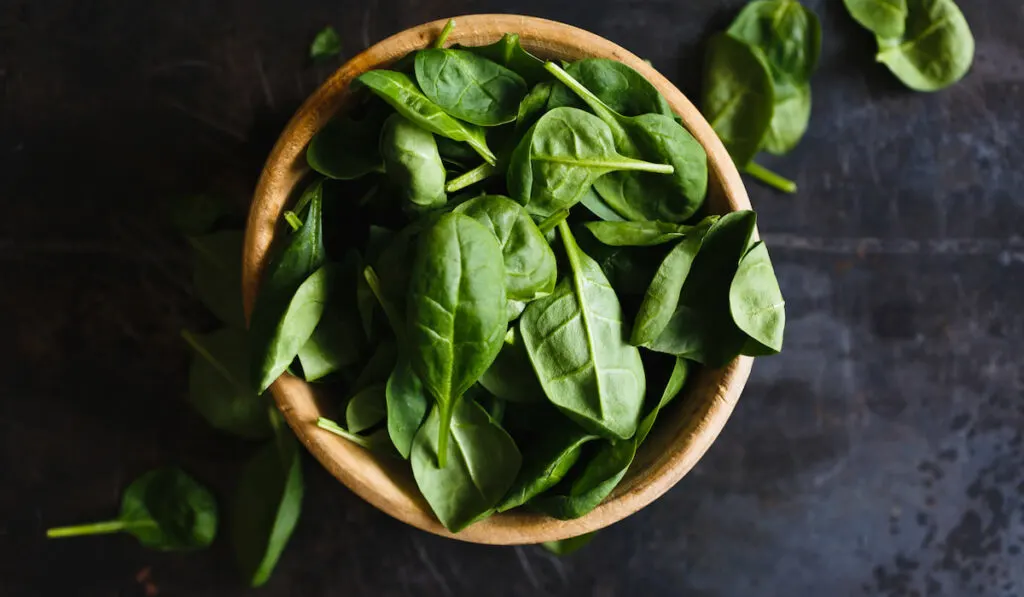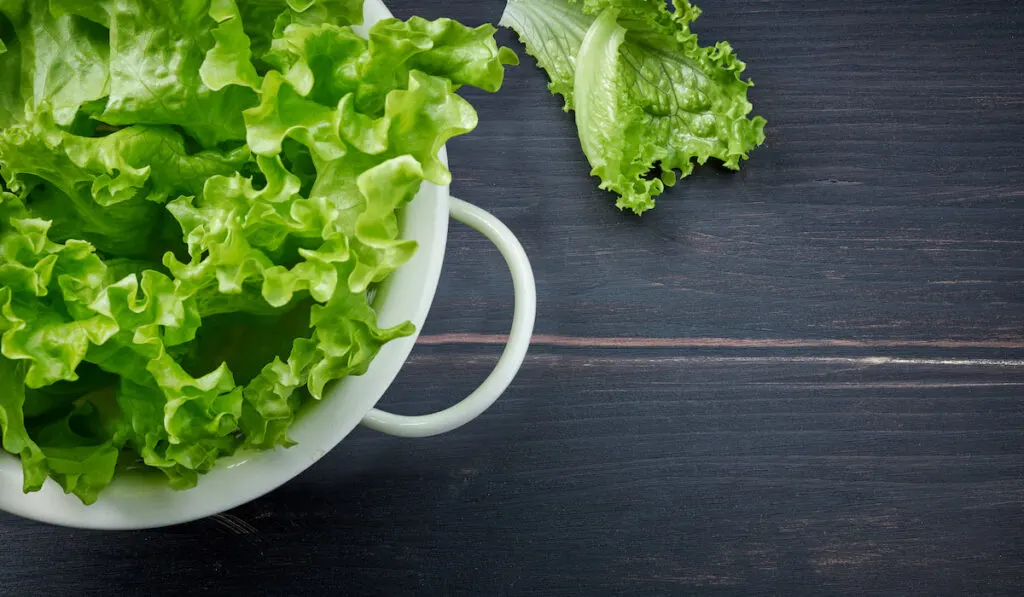Being omnivorous has led most people to believe that pigs will eat anything as long as it is edible.
While their insatiable appetite will have pigs eating almost everything offered to them, it doesn’t mean that owners shouldn’t be inconsiderate of what they put in front of their pigs, and the effects it may have on them.
Luckily, this post informs you about the top vegetables pigs love to eat and the parts and modes of preparation you should avoid in order to ensure no harm comes to them.
Table of Contents
Cruciferous Vegetables Pigs Love to Eat
1. Bok Choy

Pigs love their leafy greens, and the deep green foliage and fleshy stalks of a bok choy are no exception. In addition to a pleasant eating experience, the vegetable is vitamin-packed to support bone health and a strong immune system.
Eating it raw guarantees that your pigs get the full benefits of vitamins C and K plus fiber for a healthy digestive system. Unlike other vegetables, you can safely feed any part of a bok choy to your hogs.
While bok choy is not associated with any health issues in pigs, high consumption can lead to health issues in humans, which is why you can keep an eye on how much you give to your pigs.
2. Broccoli

Broccoli is a renowned superfood and for good reason. It is nutrient-packed with antioxidants, vitamins, and protein making it a worthy addition to your pigs’ diet. In addition to their nutrient-dense nature, most pigs love to munch on their crowns, leaves, and stalks whether raw or cooked.
As beneficial as broccoli is to your pigs, it is advisable to exercise caution to ensure that you do not feed the roots and seeds of this vegetable to your pigs as they could be potentially toxic.
What’s more, a daily consumption of 600g of raw broccoli has been shown to cause a 27% increase in DNA damage while blanched and frozen broccoli doesn’t. (Source)
You can experiment with the various broccoli varieties to find the one that your pigs love the most. These could include:
- Eastern Magic
- Belstar
- Waltham 29
- Calabrese
- Sun King
- Destiny
- Romanesco
- DiCicco
- Purple Sprouting
- Green Magic
3. Cauliflower

Like broccoli, cauliflower is packed with a ton of vitamins C and K, making it a great addition to your pig’s diet.
Since it is quite similar to broccoli, it is important to avoid feeding cauliflower seeds and stems to your pigs. Also, ensure you do not overfeed your pigs with this vegetable.
In addition to cooked and raw cauliflower versions, you can opt for the fermented version, which has more health benefits, especially for weaning piglets. Besides improved growth, fermented cauliflower introduces probiotics into the piglets’ digestive system and therefore, promotes a healthy gut.
4. Cabbage

Cabbage is equally nutritious to pigs as it is to humans. Thanks to its high fiber and vitamin content, you can rest assured that it promotes a healthy gut in your pigs while strengthening their immune system.
This way, you do have to worry about constipation issues in your drift or litter. Similarly, adding cabbage to your pigs’ diet is a great way to help them lose weight since the fiber makes them feel fuller faster. This is beneficial when you breed pigs for slaughter.
A cabbage-inclusive diet is, therefore, a great way to manage the growth of your litter. As beneficial as it sounds, avoid feeding cabbage stems, roots, seeds, and flowers to your pigs as they have been shown to negatively impact pig’s health.
The choice between raw and cooked cabbage comes down to your pigs’ preference. Keep in mind that while raw cabbage guarantees maximum vitamin benefits, blanching it increases its calcium content. It, therefore, comes down to what your pigs need more at any given time.
If you are looking to pack even more nutrients into your pigs’ diet, consider going for red cabbage. It contains more vitamin A and antioxidants, making it a worthy consideration.
Here are more cabbage nutrients and their benefits.
| Manganese | Promotes growth and reproduction |
| Vitamin C | Improved immunity and growth |
| Magnesium | Fights stress and erratic behavior |
| Calcium | Facilitates skeletal system development while regulating bodily functions like blood clotting and weight gain |
| Folate | Promotes the survival and growth of piglets |
| Potassium | Maintains electrolyte balance and neuromuscular function |
| Vitamin K | Promotes bone health and blood clotting |
As beneficial as cabbage is, keep in mind that it cannot be the center of your pig’s diet. It is, however, a fantastic way to supplement its daily diet.
5. Brussels Sprouts

You cannot go wrong with Brussels sprouts for your pigs and mini pigs.
Luckily, every part of this nutritious and tasty veggie from stems, buds, and leaves is edible whether cooked or raw. It also makes an excellent frozen treat during the hotter summer months.
Thanks to the high amounts of vitamin C, you can rest assured that your pigs have a healthy immunity system combined with the benefits of other valuable vitamins like K, iron, and folate.
Leafy Green Vegetables Pigs Love to Eat
6. Spinach

Being a renowned healthy vegetable, the health benefits of spinach cut across the board, making it a valuable addition to your pig’s diet. As a superfood, spinach is not short of vitamins and antioxidants that will massively benefit your pig.
Some of these valuable nutrients include:
- Fatty acids: Spinach is loaded with poly and monounsaturated fats that promote healthy development as well as protect your pigs from diseases like scurvy.
- Folic acid: Makes it easier for your pigs’ body to absorb other vital nutrients while supporting healthy bone development.
- Vitamin K: Aid the formation of blood, the clotting process, and bone development while preventing blindness.
- Vitamin E: Promotes a healthy heart by maintaining low cholesterol levels.
- Beta carotene: Keeps your pigs free from scurvy.
- Vitamin C: Aids in collagen production to support healthy bones and connective tissue. It also prevents scurvy.
7. Lettuce

Nothing beats a reasonable addition of fresh, raw, or cooked lettuce to your pig’s diet.
Being a great source of calcium, vitamin K, fiber, and vitamins C and A, lettuce is great for aiding your piggy’s bowel movement as well as weight management.
Vitamin K, on the other hand, helps maintain healthy blood pressure in your pigs, while promoting healthy bone development. Like spinach, lettuce also comes with a commendable amount of fatty acids making it a great vegetable to supplement regular pig feed.
To ensure that your pigs get maximum nutrients, always be keen on only fresh vegetable produce. For instance, the nutritional value of lettuce declines fast when left out after harvest.
8. Kale

Kale is another healthy vegetable to introduce into your pigs’ diet. Offer your pigs and mini pigs the leaves and stems wilted or crunchy and they will love the refreshing, moist feel.
As tempting as it might be, never offer frozen kale to whatever type of pig you might be keeping.
This is especially if you are looking to increase their vitamin C intake. Blanching and freezing can drastically reduce the vitamin C levels in this superfood, making it less beneficial to human beings and animals like pigs.
Similarly, vital minerals found in kale risk leaching out during blanching, thereby affecting the end product. The potassium content is especially notorious for being easily lost, even though only a small about of it may be lost.
Kale is packed with fiber, calcium, and antioxidants, making it a healthy option for your winter ration for minis and pot-bellied pigs. You will be surprised at how much weight your pigs can gain on a diet of kale, especially when mixed with a grain diet.
As healthy as kale may be, too much can lead to bloating, hence the need to be careful.
Marrow Vegetables Pigs Love to Eat
9. Pumpkin

Pumpkins are as safe and nutritious for your pigs as they are for humans. Therefore, do not shy away from feeding them to your pigs whenever you have an excess, especially during fall and Halloween.
As a superfood, pumpkins contain various vitamins and nutrients that support a healthy gut and skin in pigs.
That being said, overfeeding pumpkin to your pigs can cause diarrhea, which is why you should always exercise moderation in feeding it to your pigs. Rather, you should focus mostly on the regular pig diet.
The best part about pumpkin is that your pigs can safely consume every part of it from the vines, leaves, skin, and seeds. For instance, you can mix raw or roasted seeds into your pig feed, or you can creatively prepare the skin and leaves, and your pigs will enjoy it.
Lastly, with significant amounts of fats, protein, copper, potassium, fiber, manganese, vitamin A, C, B2, E, and iron, adding pumpkin into your pigs’ diet will:
- Boost immunity system
- Promote digestive health
- Promote healthy skin and vision
Final Thoughts
While these are the majority of vegetables pigs love to eat, it is crucial to keep an open mind. Like humans, pigs can also develop eating habits causing them to be fussy about some in general or about how they are offered.
The trick is to learn how your pigs like any of these and then focus on offering them in a more palatable way. That said, only offer either of these vegetables in recommended ways. For instance, kale should never be frozen even if your pigs seem to prefer it that way.
Resources
- https://bestfarmanimals.com/can-pigs-eat-cabbage-broccoli-cauliflower-bok-choi-etc/
- https://thetilth.com/can-pigs-eat-broccoli/
- https://gardenerspath.com/plants/vegetables/best-broccoli-varieties/
- https://www.cancer.gov/publications/dictionaries/cancer-terms/def/cruciferous-vegetable
- https://thetilth.com/can-pigs-eat-cabbage/
- https://www.animalfate.com/can-pigs-eat-cabbage/
- http://cyxb.magtech.com.cn/EN/abstract/abstract5618.shtml
- https://www.hamletthepiggy.com/hammy-me-blog/2017/4/24/the-dos-donts-of-pig-diet
- https://pigspeace.org/main/didyouknow.htmlhttps://a-z-animals.com/blog/what-do-pigs-eat/
- https://www.minipiginfo.com/mini-pig-approved-food-list.html
- https://www.betterhealth.vic.gov.au/health/healthyliving/fruit-and-vegetables
- https://americanminipigassociation.com/mini-pig-education/mini-pig-nutrition/healthy-foods/|
- https://farmyardcare.com/can-pigs-eat-spinach-all-you-need-to-know/
- https://bestfarmanimals.com/healthy-vegetables-for-pigs-potbellied-mini-all-pigs/
- https://farmyardcare.com/can-pigs-eat-lettuce/
- https://farmingbase.com/can-pigs-eat-pumpkin/
- https://www.healwithfood.org/nutrition/fresh-vs-frozen-kale-comparison
